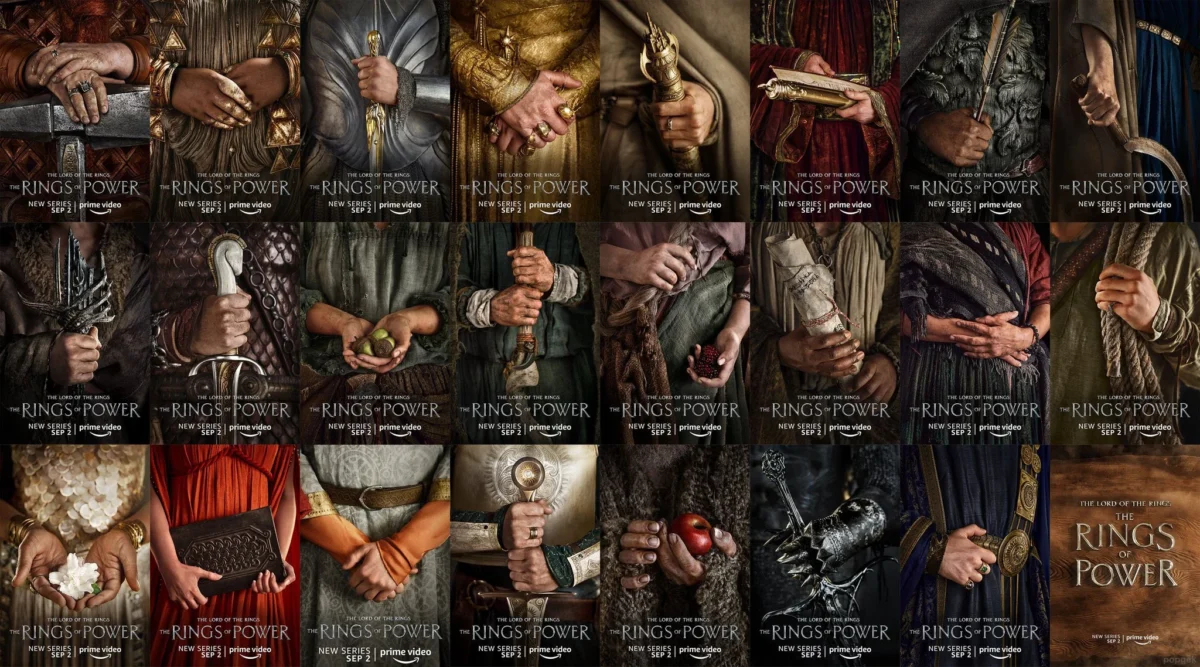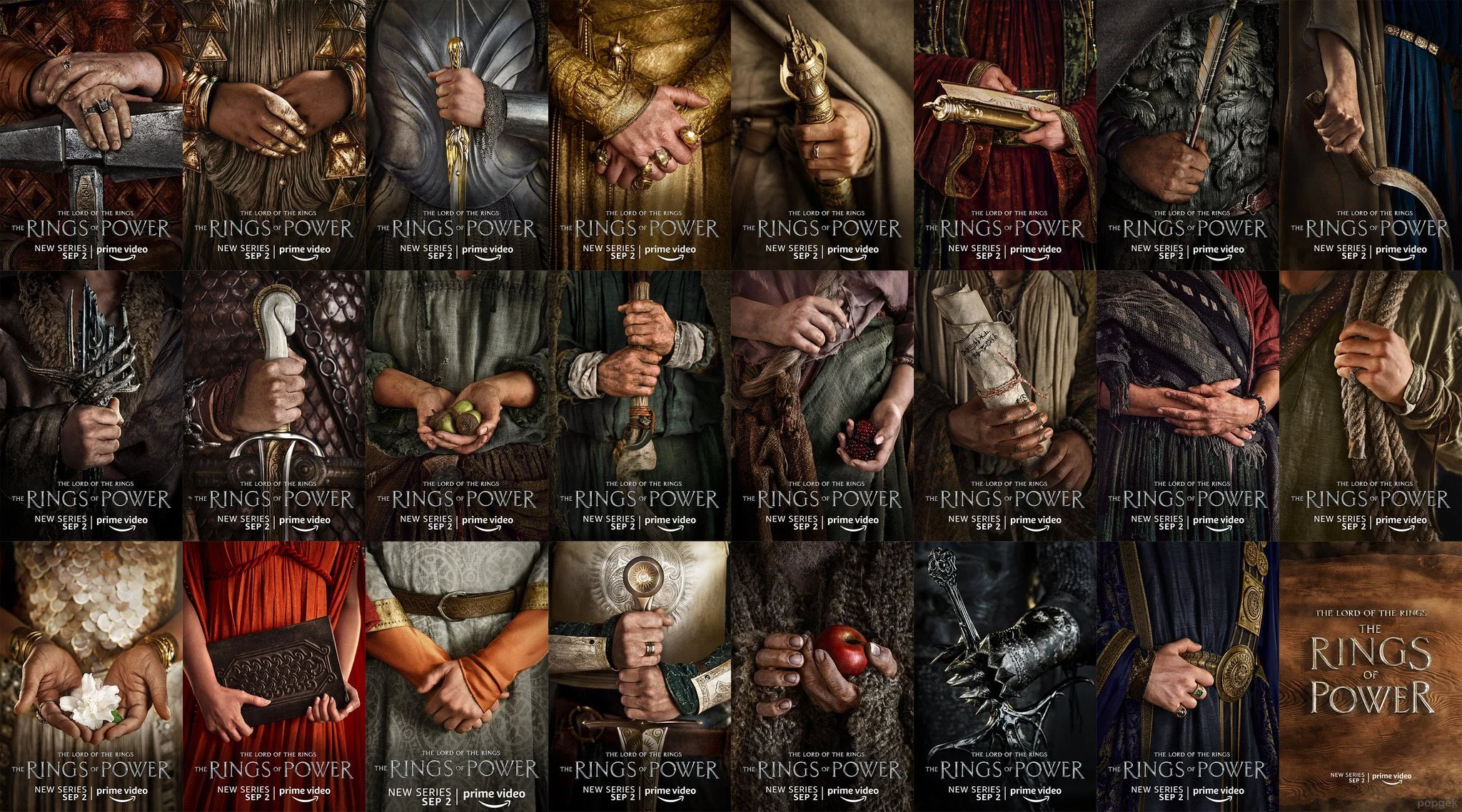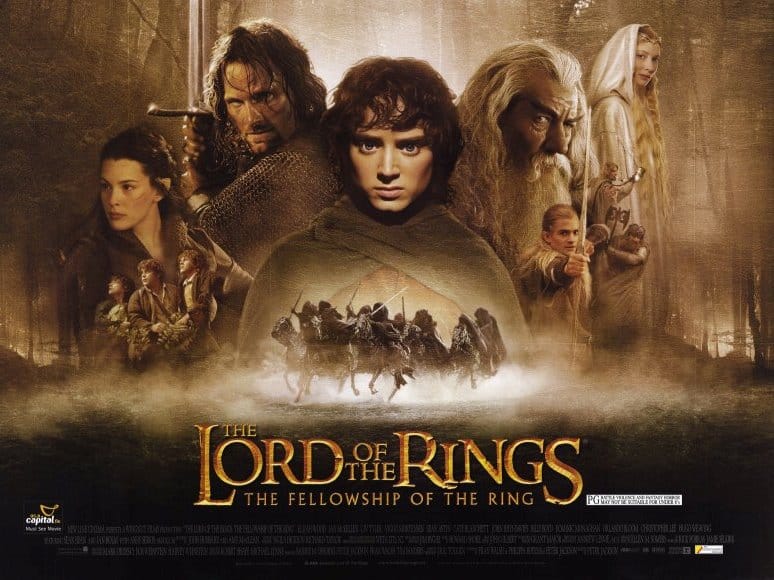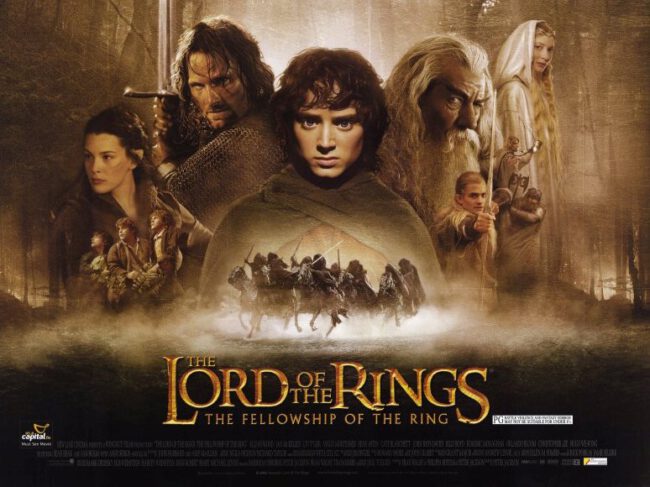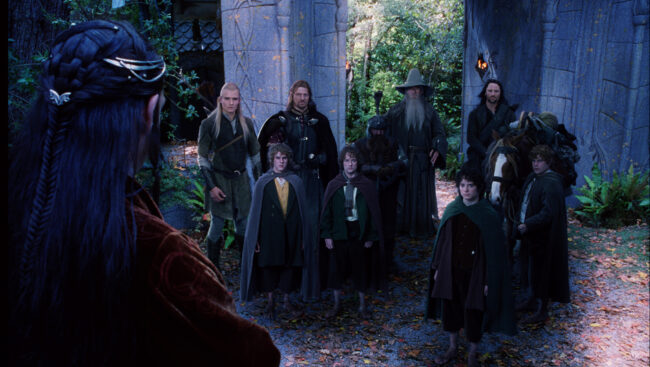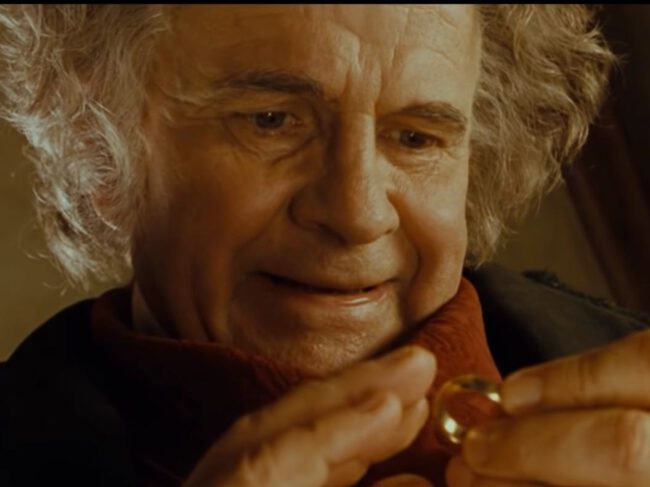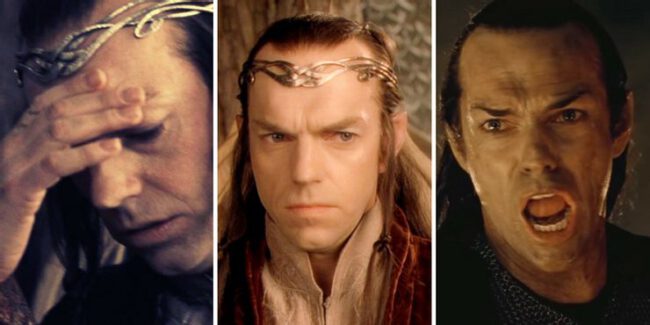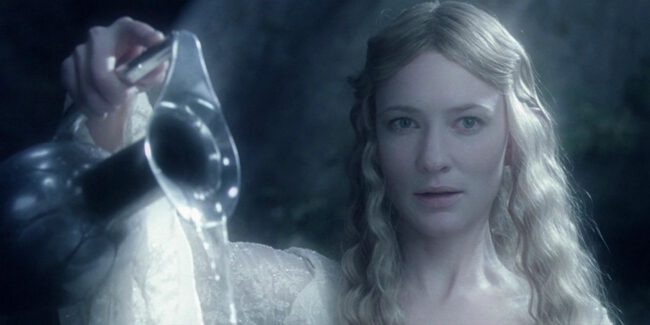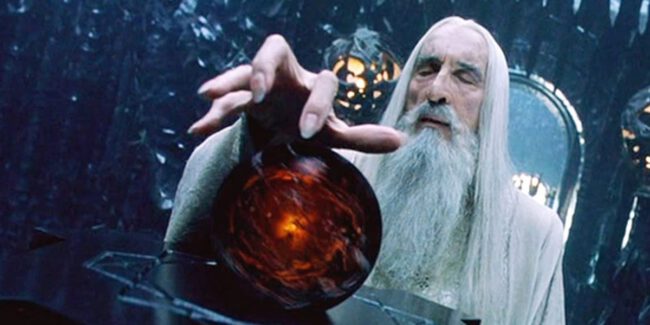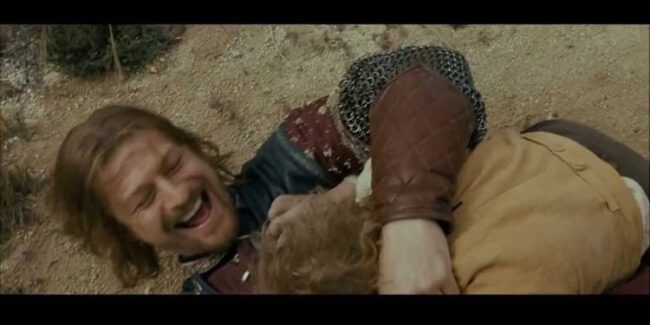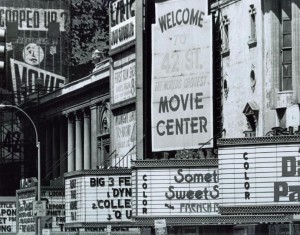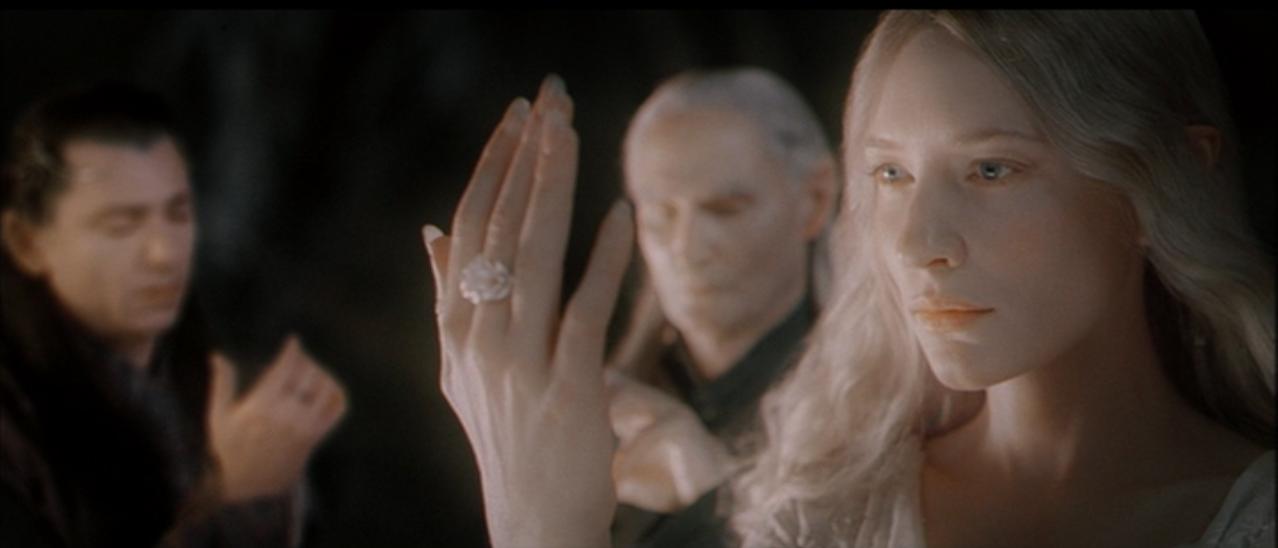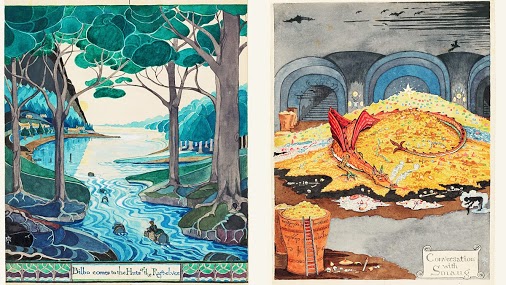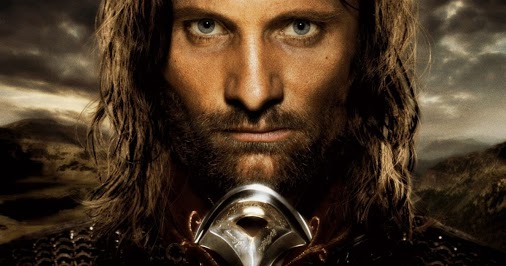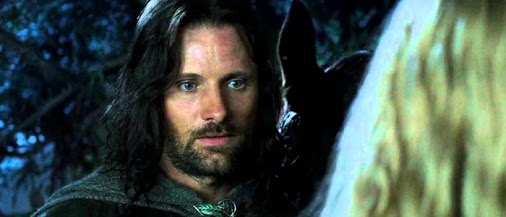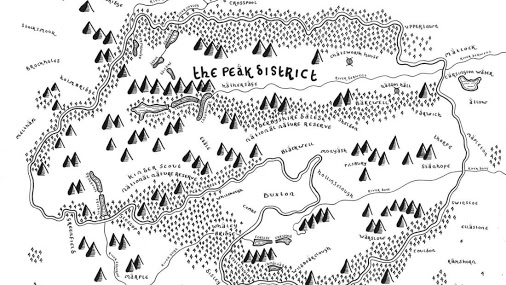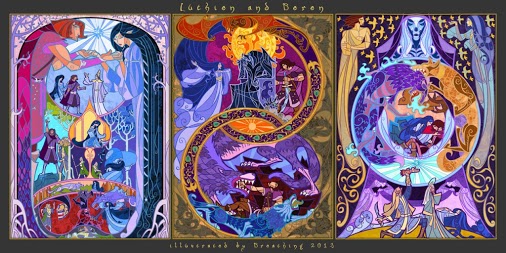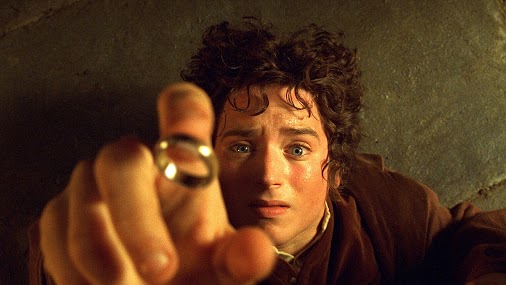Definite Spoilers for S.1 and the Season Finale
Rings of Power Season 1 is a wrap. Since my original review, two eps in, has my opinion changed?

It’s a show that has been simultaneously wonderful, intriguing, and maddening. Let’s break it down.
The Bad — Too Much Time On Their Hands

By having a “guarantee” for five seasons, it felt like a certain sense of time pressure was lifted from the creators. That “we have to get pulses pounding so that they will renew us!” gave way to “We have all the time in the world, so let’s not be hasty!” The result? Tons of slo-mo, so many lingering looks, and …
… well, to paraphrase Emperor Joseph from Amadeus, “Too many notes.” Or, rather, too many stories, too many characters. Lindon, Eregion, Khazad-dûm, Numenor, the Southlands, the Greenwoods … the Elves, the Dwarves, the Humans of Numenor, the Humans of the Southlands, the Harfoots (and not to mention the Orcs) …
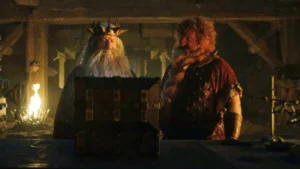
Stories came and went, and the viewer never knew what they’d manage to wedge into a given episode. Remarkably enough, even the Big Season Finale just left some of them dangling in the dark, not even giving us a passing look to acknowledge them. The family conflict in Moria. The fate of Bronwyn and the Southlanders. Well, folks, we hope we remember you when we do a quick catch-up whenever Season 2 rolls around.
And I’ll add into the “Bad” the delay to S.2. Given that the first season (even with COVID) took 18 months to produce, and that they just started filing S.2 this month, I expect we won’t see anything more until early 2024. Which is … damn. Even the LotR movies kicked out reliably across three Christmas seasons.
The Good — Gorgeous and Occasionally Clever
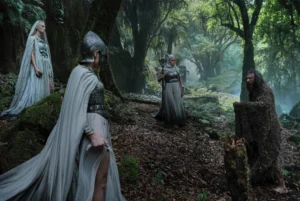
That said, the last handful of episodes really did start paying off all the long, loooong passages in the beginning, and the finale split story between the Stranger/Harfoots and Elves/Rings was awesome. (Yeah, the Numenorean bits were fine, too, but very much played third fiddle to the overall episode.)
Indeed, given how slowly things had been moving, I didn’t think we’d get to actual Ring Forging until next season. Instead, it fit in quite neatly here (even though, honestly, if Sauron hadn’t acted, he might have done away with the elves altogether, at least in this world’s setup).
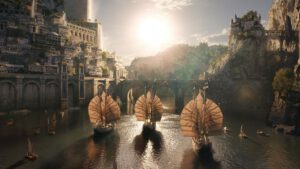
Which, thinking of all that forging stuff, causes me to consider the elvish forging equipment, which makes me think of the visual worldbuilding here, and what even its biggest critics have had to admit: this show is drop-dead gorgeous. Numenor and the Numenoreans are design wonders, evocative of what the West (Gondor) eventually turns out to, but with rich overlays of ancient Middle Eastern tones and artistry. Exquisite.

There were also, by the end of the episodes, fine setups for S.2 — we are off to visit Rhun (which is a massive blank canvas, so the Middle-Earth pedants will lose some traction), and Numenorean politics is about to heat up, esp. with Miriel blinded (and so unable to use the Palantir up the attic), and the whole “Only old-fashioned race-traitors like the elves” sentiment simmering under the surface. Speaking of whom, not sure what the elves will be doing, aside from maybe arguing over who gets to wear the Three (Gil-Galad might have something to say about that, as he did in the original), and clearly there’s more to come about the internecine struggle amongst the dwarves, even if it wasn’t even acknowledged in the finale..
The Okay
This saga takes fairly significant liberties with the original material. Even if you acknowledge that they could only play with the Appendices of LotR, not the actual Silmarillion, we have tremendous time compressions and lumping together of storylines across the Second Age to show that the story itself is clearly being altered.
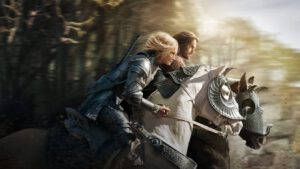
But to that extent (and to the end of having a single coherent show, not an anthology across those 3,400 years of Second Age), I think they did pretty well. Sure, they ended up with Galadriel basically walking, sailing, and galloping from one end of the western world to the other (I almost expected to see her riding a horse through a landscape, that would then open up after her passage to reveal our favorite Harfoots hidden from her eyes), but it all turned out … pretty okay.
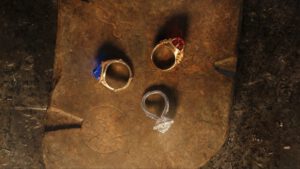
Did it all make sense? Sometimes. Usually. The finessing around Sauron’s reveal and the forging of the Three, for example, was very neatly done.
On the other hand, the idea that rerouting a big reservoir of water across twenty miles of earthen tunnels to pour into a volcano’s caldera to create a massive explosion and pyroclastic flow that destroys the landscape but doesn’t kill everyone nearby, so as to create a “nuclear winter” localized landscape and weather system, perfect for orcs … well, that’s just silly, but it’s beautifully set up and executed and it beats any story Tolkien gave us about the founding of Mordor, and it’s a goddamned story about elves and orcs, so I can live with it.
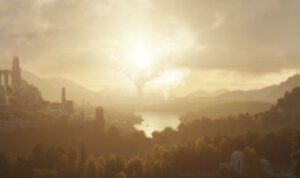
I’m slightly less sanguine about the plague on the Tree and the origin of mithril and all of that — except, again, it replaced centuries of kingdom-building and elvish (and dwarvish) politics. A big goofy, but within parameters (especially given how arboreal health seems elsewhere in canonical Tolkien to be so damned portentous).
So, yeah, the books talk about the Istari arriving by boat from the West, greeted by Cirdan (who gives his elven-ring to Gandalf), and all of that a thousand years into the Third Age, not falling from the sky thousands of years earlier. But … whatevs, it kept people guessing and doesn’t effectively change the dynamic. (And despite utter confidence that that’s Gandalf there in the burlap robe, for a variety of reasons, I’m holding out hope that it’s actually Saruman. Or maybe one of those Blue Wizards who actually traveled to the east …)
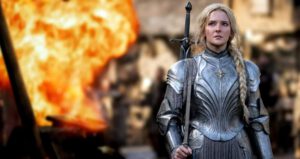
As to whether Galadriel was a warrior princess … again, it works here, even if it’s not quite what our known background info would suggest. Again, adaptation, and, let’s face it, with the pacing problems the show had, having a damask-robed slow-motion Galadriel looking somber the whole time as she walked from grove to grove would be … damned boring.
In Sum
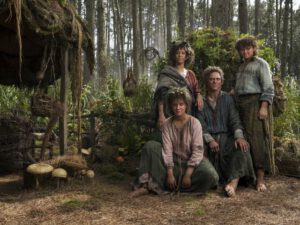
Overall, it’s not quite as Peter Jackson-mesmerizing as I had hoped, and it suffered from too much material presented too slowly, but I would much rather have watched Rings of Power than to have never seen it. I hope, eventually, to enjoy at least another season of it.
